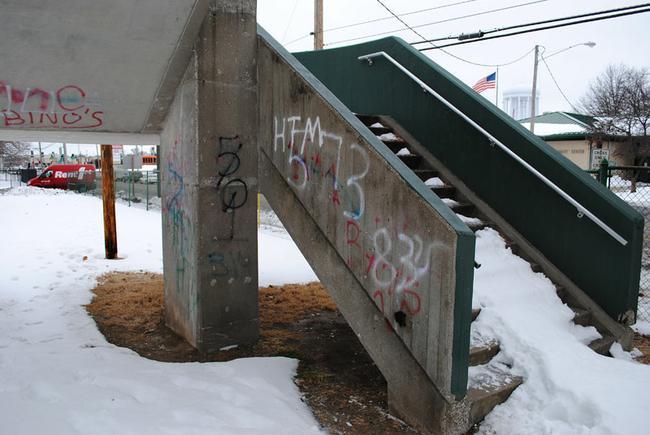
When Douglass High School student Alonzo Stevens was arrested Jan. 25 in connection with two earlier shootings, the Columbia Police Department suspected gang activity.
Given Columbia’s gang presence, this suspicion might not have been too far off, Detective Jon Logan said.
“It is something that we investigate on a regular basis, and I think it’s becoming more prominent,” Logan said.
Although he didn’t have any specific numbers, he said CPD has seen higher instances of gang-related crimes lately. Local gangs have increased in both membership and quantity over the past four to five years, he said.
The state of Missouri defines a “criminal street gang” as “any ongoing organization, association or group of three or more persons, whether formal or informal.”
Criminal acts such as assault with a deadly weapon, robbery, tampering with witnesses and victims and murder fall under a subdivision of Missouri’s definition of a gang. One of the group’s primary activities has to be the commission of one or more of these acts. Additionally, the group must have an identifying sign or symbol.
National trends concerning gang crime data are faulty, because, like CPD, half of the country’s law enforcement agencies do not regularly record cases as “gang-related,” results from the 2009 National Youth Gang Survey showed.
“It’s important to understand that arrests aren’t typically made referencing a gang statute,” Logan said. “We can investigate a shooting and make an arrest and know it has gang-ties that caused the shooting, but the actual charge itself would be assault first or something along those lines. “It’s not going to be an actual ‘gang crime.’”
This doesn’t mean CPD doesn’t acknowledge the existence of gangs in Columbia. Logan said Columbia has five prominent gangs: the Cut Throats, Squad Up, Louie Bound, Young Money and the Mississippians. He said the smallest of these gangs has around 10 members and the largest could have anywhere from 50 to 75 members.
“Sometimes you have the gang itself with many, many associates,” Logan said. “Before we link someone directly to the gang itself, we like to have solid information, not just that they’re in the same family, live in the same neighborhood or something like that.”
In January 2009, 16 members of the Cut Throat gang were indicted by a federal grand jury for their roles in two drug-trafficking conspiracies linked to several shootings and firearm violations. Many of these members received prison sentences ranging 10 to 20 years.
Logan said he believes this particular gang, which he predicted was one of Columbia’s largest, died down following these events.
“Historically, they had always been the biggest,” Logan said. “At least until the federal gang task force got involved.”
Gang busts such as these make the city of Columbia safer, Logan said. CPD is constantly pursuing gang-related information.
“We always try to obtain information about their activities, membership and location,” Logan said. “Occasionally, they’ll admit that there was a gang motive or their involvement with a gang was part of the problem or reason for the fight, disturbance, shooting or whatever the case may be.”